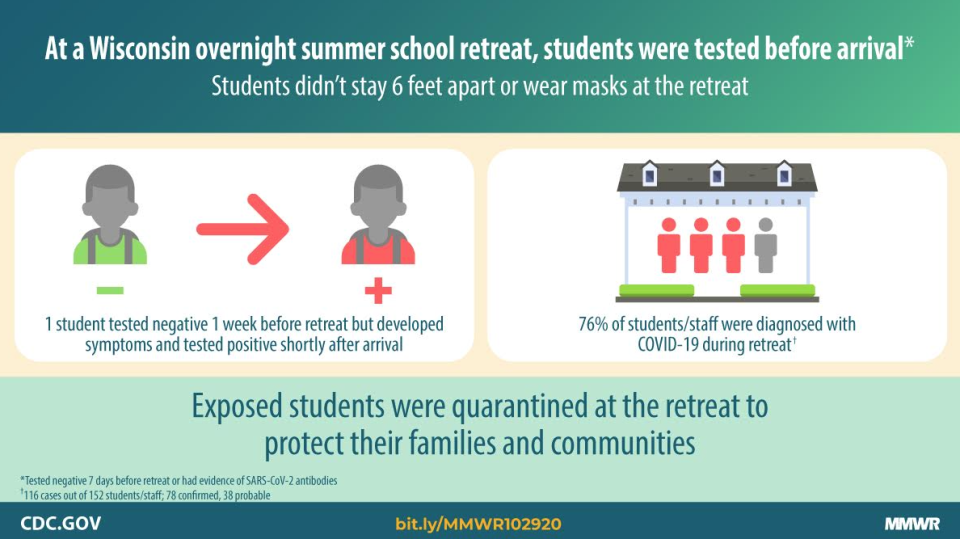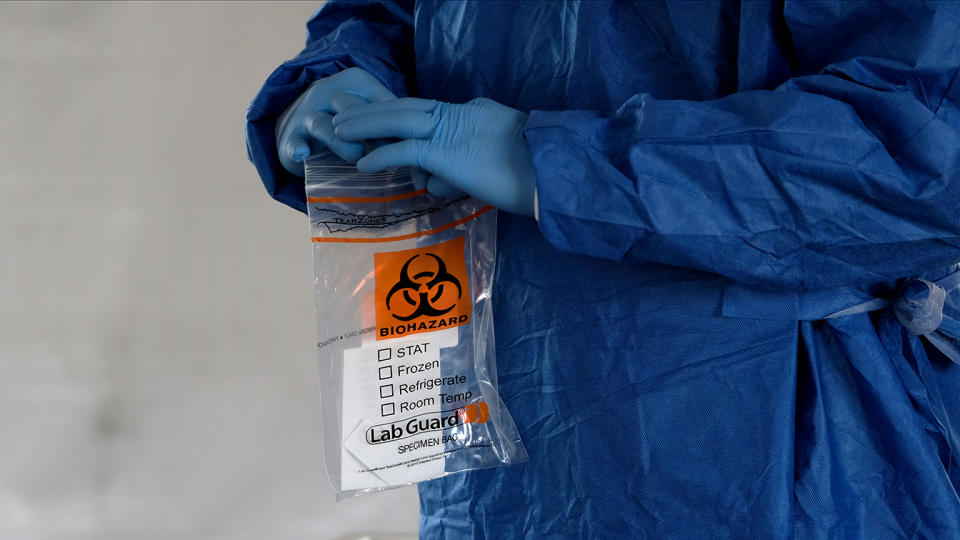Religious school retreat led to coronavirus outbreak in Wisconsin
WASHINGTON — The coronavirus tore through a religious school retreat in Wisconsin over the summer, fueled by a lack of proper mitigation measures. Although nobody fell seriously ill, the scope of the outbreak — an exceptionally high 76 percent infection rate — suggests the intensity with which the airborne pathogen can proliferate in the absence of appropriate measures.
The outbreak is discussed in a new study published on Thursday by the Centers for Disease Control and Prevention. The CDC does not name the camp in question, describing it only as a “faith-based educational retreat for boys in grades 9-11” in Wisconsin.
The boys, their teachers and their counselors — 152 people in all — arrived there on July 2, traveling from 21 states and two countries. They had to show that they had either tested negative for the coronavirus or had a positive antibody test, meaning that they’d already fought off the disease.

The camp appeared to enforce few safety measures. “At the retreat, students and counselors were not required to wear masks or social distance, and students mixed freely,” the CDC said. They slept in four- to six-person dormitories and eight-person yurts. “Beds in dormitory rooms and yurts were tightly spaced with three to four sets of bunks each, shared bathrooms, and shared common areas,” the researchers wrote.
A student in the ninth grade reported symptoms — “sore throat, cough, and chills” — on July 3 and tested positive for the coronavirus two days later. It would turn out that one of the boy’s relatives back home had also tested positive.
The new study suggests that camp officials did not respond adequately to the initial case. Students who’d been in close contact with the index patient — the name given to a patient responsible for the spread of the disease — “were given masks, but contact tracing was not done and the students were not isolated,” wrote the study’s authors, among whom were epidemiologists for both the CDC and Wisconsin’s health department.

The virus then quickly spread through the camp, with 78 confirmed and 38 probable cases in the next two weeks, a sign of just how relentlessly the coronavirus can spread if left to its own devices. The CDC faulted camp officials for not executing “recommended nonpharmaceutical interventions” to a sufficient degree.
No one died or required hospitalization, as young people tend to experience only mild forms of COVID-19, the disease caused by the coronavirus. But things could have been different if the outbreak had taken place in a densely populated community as opposed to an overnight camp where attendees presumably had little to no contact with community members. (The attendees did not leave camp until Aug. 11, by which time none of those who had tested positive in July would have been infectious.)
Intriguingly, 24 attendees had come to camp with coronavirus antibodies. None of them became infected once the outbreak began. That means that “some protective effect was present,” the researchers wrote. Just how long antibodies linger in the system, and how effective they are in preventing reinfection, has been a matter of intense dispute.
The outbreak in Wisconsin can be contrasted to the lack of one in Maine, where 1,002 people attended several camps throughout the summer. Those camps took proper measures, and only three people got sick.
_____
Read more from Yahoo News:

 Yahoo Finance
Yahoo Finance 


